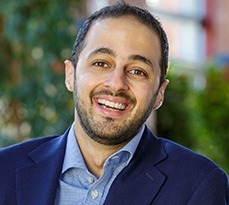There is a causal link between illegal drugs and public corruption, finds a study co-authored by Kamiar Mohaddes of Cambridge Judge Business School based on the crack cocaine market in California.

Do illegal drugs foster public corruption? While such a presumed link has long been remarked upon, a study co-authored by Kamiar Mohaddes of Cambridge Judge Business School demonstrates such a causal link quantitatively.
The study published in the European Journal of Political Economy focuses on crack cocaine in California, given that a market for crack cocaine emerged in that state in 1981 before reaching any other US state – and public corruption more than tripled in California in the first three years following crack cocaine’s arrival, the paper says.
The research then looks at the link between illegal drugs and corruption in other US states as well during the period 1976 to 1985.
“We argue that illegal good profits, public corruption and law enforcement co-evolve,” says the study. “This resulted from the particular characteristics of illegal drugs: cheap technology and rigid demand, which fosters a convergence of interests between criminals and corrupted public officials resulting in a positive causal impact of illegal drugs on corruption.”
The study contributes to a wider public debate on the design of anti-corruption policies around the world, says co-author Kamiar Mohaddes, University Senior Lecturer in Economics & Policy at Cambridge Judge Business School. “Public corruption is clearly a key problem affecting various areas of society, and this makes sustainable and balanced economic growth extremely difficult,” he says.
“While the study focuses on crack cocaine, the findings are equally applicable to other drugs such as crystal meth which are highly profitable and have a rigid demand, so we believe that the findings have implications far broader than the specific crack cocaine market studied.”
Crack cocaine was chosen as the study’s subject for three key reasons: it is easy to produce (a highly potent substance made from baking soda, water and cocaine powder) and is thus highly profitable for drug dealers; it is relatively cheap and highly addictive, creating a large potential consumer base and rigid demand; and the drug’s head start in California allowed the authors to “exploit the lag in its initial arrival to each US state” to establish a causal effect with corruption.
The research estimates such causal effect using the synthetic control method, which builds on what is known as the “difference-in-differences” approach to test causal impacts of policy interventions by comparing two groups of observations – one affected by a specific treatment and the other a control group not affected by such an intervention.
“To the best of our knowledge, this is the first study to systematically examine the causal relationship between drugs and public corruption,” the authors say.
“The contribution of our work thus lies in showing the existence of a positive causal effect of drug markets on public corruption in advanced democracies such as the United States, arguing that an important determinant of corruption is the combination of cheap technology and rigid demand associated with illegal recreational drugs.” The study in the European Journal of Political Economy – entitled “Illegal Drugs and Public Corruption: Crack Based Evidence from California” – is co-authored by Alessandro Flamini of the Department of Economics and Management at the University of Pavia in Italy, Babak Jahanshahi of the University of Edinburgh Law School, and Kamiar Mohaddes of Cambridge Judge Business School and King’s College, Cambridge.


